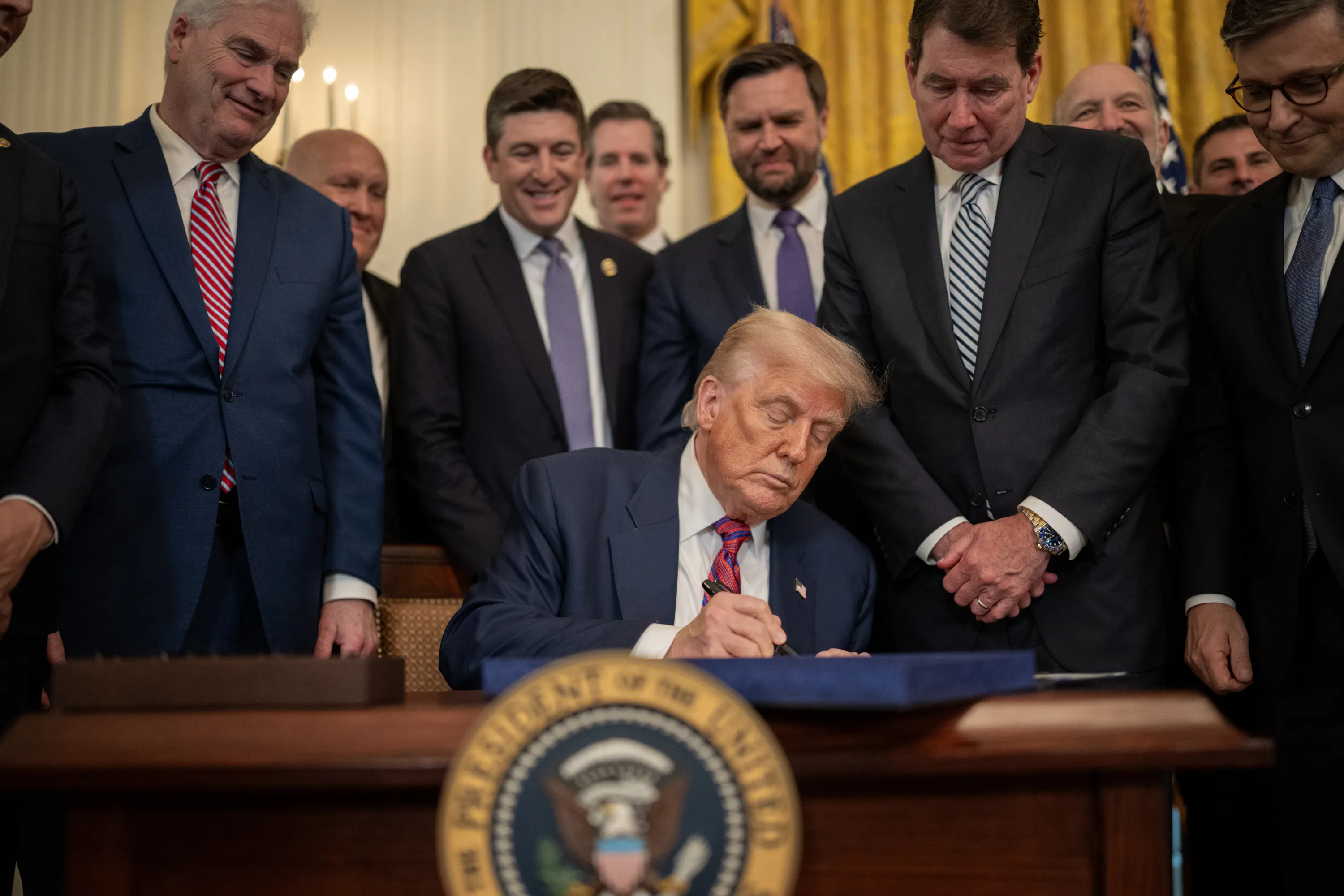This visualization shows you 35 years of US income inequality
What lies behind this trend?
Image: REUTERS/Brendan McDermid
Stay up to date:
United States
Watch the The Great American Divide session at the World Economic Forum's Annual Meeting 2017 here.
Income inequality is a hot topic in the US, and in countries around the world.
Terms such as the ‘top 1%’ or ‘bottom 90%’ dominate the discussion. But it can be hard to visualize exactly how much of the pie these groups are taking home.
Now thanks to howmuch.net, for the US at least, the picture is clearer.
Howmuch.net used the following diagram to track the distribution of income in the US over 35 years.
Accept our marketing cookies to access this content.
These cookies are currently disabled in your browser.
The graphic is best explored yourself, but there are several familiar trends in the visualization.
The largest section (in yellow) shows the bottom 90%. From 1979 to 2014, their share of income fell from 67.65% to 52.66%.
Accept our marketing cookies to access this content.
These cookies are currently disabled in your browser.
____________________________________________
Have you read?
3 charts that explain global inequality
A world of 100 people: this video explains inequality in 2 minutes
____________________________________________
This has been offset by increases in the other five groups. The top 1% has seen its share rise from 5.87% to 10.36%. The top 0.01% now takes 3.19% of total income.
What lies behind this trend? The Economic Policy Institute says it is down to two things: “policy choices and cultural forces, which have combined to put downward pressure on the wages and incomes of most Americans.” The result? Inequality in the US has been rising since the late 1970s.
The situation in the US is very similar to what has been happening elsewhere. Earlier this year, Oxfam released a startling report. The charity’s research suggests that the richest 1% now hold over 50% of global wealth. The report also says that 62 billionaires now own the same amount of wealth as the poorest half of the world’s population.
This inequality not only fuels discontent, but it also damages economies, according to the IMF, which found that a 1 percentage point increase in the income share of the top 20% drags down GDP growth by 0.08 of a percentage point in the following five years.

Don't miss any update on this topic
Create a free account and access your personalized content collection with our latest publications and analyses.
License and Republishing
World Economic Forum articles may be republished in accordance with the Creative Commons Attribution-NonCommercial-NoDerivatives 4.0 International Public License, and in accordance with our Terms of Use.
The views expressed in this article are those of the author alone and not the World Economic Forum.
Forum Stories newsletter
Bringing you weekly curated insights and analysis on the global issues that matter.
More on Economic GrowthSee all
Agshin Amirov and Azar Hazizade
September 19, 2025
Muhammad Osama Khan and James Balzer
September 18, 2025
Eric White and Elia Tziambazis
September 18, 2025
Lars Holmquist
September 17, 2025
Dante Disparte
September 17, 2025
Hazuki Mori and Luigi Scatteia
September 17, 2025





